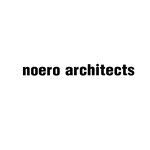Noero Architects was formed in Johannesburg in 1984. In 2000, the practice relocated to Cape Town, and now has offices in Cape Town and Port Elizabeth.
The practice has received both local and international awards, including the Lubetkin Prize from the Royal Institute of British Architects in 2006, the Ralph Erskine Prize from the Nordic Association of Architects in 1993, and the Icon Award for Building of the Year from Icon Magazine in London in 2013.
The work of Noero Architects has been exhibited at the Museum of Modern Art in New York in 2012, the Venice Biennale in 2008, 2010, and 2012, the Singapore Biennale in 2008, the Sao Paolo Biennale in 2009, the Chicago Architecture Biennale in 2015, the Museum of Architecture in Munich in 2014, and the National Gallery of Art in Cape Town in 2009.
The work of the practice has been extensively published and is included in the Phaidon Atlas of 20th Century World Architecture. The work is part of the permanent architecture collection of the Chicago Art Institute.
Statement
Architecture is a social art and as such has a responsibility to not only be useful, but also beautiful. This objective runs through all the work that we do at Noero Architects.
“A bicycle shed is a building; Lincoln Cathedral is a piece of architecture —- the term architecture applies only to buildings designed with a view to aesthetic appeal” – Pevsner (1943). We disagree absolutely with this statement. All buildings, small or large, cheap or expensive, make up architecture; the only distinction we make is between good and bad architecture. We have completed over 200 buildings since the practice was established in 1984. Many of these projects have been small. We take as much care on the small projects as we do with the larger ones. For us, our ethical responsibility lies in all the work we do, not only in the prestigious projects, but in all of the projects that are done.
South Africa is an extraordinary place to practice architecture. The landscape and people are diverse, and the opportunity to remake architecture in this country after freedom in 1994 is an enormous challenge. The maxim which guides our work is bound up with the idea of the Ordinary and the Extraordinary. Great potential exists in transforming the everyday lives of our cities and people by making extraordinary works, whose origin lies in the everyday practices of people. The two are inextricably interwoven; the one cannot comfortably exist without the other.
Much is made of research and its relationship with practice nowadays. Our work constitutes our research. When we make buildings we effectively create the possibility of research. The challenge is to understand the work in ways which can provide us with new understandings in order to guide future work. For this reason we place our work whenever we can in the public arena through publications and exhibitions. This provides very valuable feedback for us to better understand what we do through the criticism of others. This enables our work to always move forward and to be continually refreshed through each and every project that we do.
We do not believe in the maxim that “God lies in the details” – Mies van der Rohe (1956). This quote simplifies what is in effect a very complex set of ideas. We cannot in our work separate out detail from design; they are part of the same process. We do not talk about detail; rather, we talk about good or bad architecture.
Similarly we do not support the idea of separating out necessity and luxury. They should be indistinguishable in a good work of architecture. That which is necessary should be also beautiful and luxurious. This attitude is persistent in much of our work.
We have done much work in various areas which have not until recently received much attention from architects. The discipline that is needed to work in a context in which finances are constrained has taught us as a practice a great many lessons, and has reinforced in our mind that one does not need large dollops of capital to make good architecture. In fact, most of our best buildings have been built under severe financial constraints, and are still in our opinion some of the best work we have done to date.

